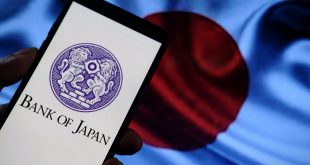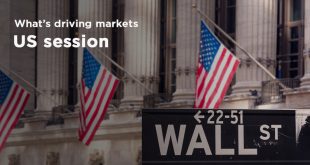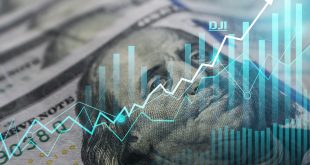On 16 March, Jerome Powell, the chair of the US Federal Reserve, announced that the central bank would hike interest rates to 0.25 percent. It was likely just the first in a sequence of rate increases designed to tame stubbornly high inflation. Since the start of the year, the Fed chair and his colleagues have indicated that the central bank would be raising short-term rates and have reiterated that the Fed was committed to taking “the measures necessary” to reduce inflation.
Economists have debated the extent to which this bout of inflation is the result of expansionary fiscal and monetary policy—low interest rates and large amounts of government spending, particularly transfers to households—or of pandemic-specific factors, including disruptions to global supply chains and, consequently, rising prices for commodities and manufactured goods. It remains unclear whether the rate increases the Federal Reserve has planned out will be sufficient to tame rising prices or the extent to which they will curtail economic growth.
These consequences are likely to be most severe in some low- and middle-income countries. Relative to wealthier states, these countries generally have worse credit, and it costs them more to borrow. They are also more likely to borrow in US dollars. It will be especially bad for developing and emerging markets that are still grappling with the pandemic’s economic fallout, as well as those that are net importers of food and energy, the prices of which have risen dramatically as a consequence of the war in Ukraine.
These countries will likely see more debt distress and large currency devaluations, hampering their economic growth and making it more difficult for them to reduce poverty.
But whatever the impact, rising interest rates will not just affect the United States. Higher US rates raise the cost of borrowing in US dollars on international markets. They also increase demand for US dollar assets relative to assets in other currencies, and they can therefore cause those currencies to fall in value. For countries where external debt is denominated in US dollars, debt repayment will become more expensive.
The US financial market is by far the planet’s largest, and the dollar is the world’s principal reserve currency. It is the backbone of international loans and the main currency of use in international trade transactions and internationally traded bonds. As a result, Federal Reserve actions have an outsized effect on the economies of other countries.
That is especially true in emerging markets and developing countries, which often rely on the US dollar for international borrowing. When the Fed raises interest rates to help tame US inflation, external borrowing in dollars becomes more expensive.
The hikes can also stoke inflation in other economies: as US assets yield higher returns they become more attractive to investors relative to the assets of other countries, driving up the value of the dollar. This raises the cost of imports, which are often priced in dollars. It also makes it more expensive for governments and firms in developing countries to pay off their existing debts in US dollars. The result can be domestic austerity measures, resulting in lower economic growth. (These effects are more modest in advanced economies, since they borrow primarily in their domestic currency and their domestic prices are less likely to rise when their currencies depreciate.)
The US interest rate increases come in challenging times. To cushion the effects of the pandemic, many poorer countries had to take on more debt, and with the decline in economic activity caused by the pandemic, they are struggling to service or repay that debt.
Tourism-dependent economies, for instance, saw their main source of external revenue dry up as international travel came to a standstill. Many emerging and developing economies are also already facing domestic inflation, triggered by pandemic-related production disruptions and rising global energy and food prices. Rising food costs, in particular, stoke inflation in emerging and developing economies, where residents spend a higher percentage of their income on groceries than do residents of richer states. They can also trigger social unrest.
The Federal Reserve, of course, can only directly set short-term interest rates, and US long-term rates—such as the yield on government bonds that mature in ten years—also have an important effect on both economic activity and long-term rates in other countries. This is, again, particularly true in emerging and developing economies. But when the Fed tightens its monetary policy, it can cause these rates to rise, as well. And they are already going up: between the end of 2021 and March 31, 2022, the interest rate on 10-year US Treasury securities rose by one percentage point.
So far, this is a relatively small increase. It suggests that markets currently expect the increase in short-term interest rates is going to reverse at some point—and hence that US inflation will eventually abate. For emerging markets and developing countries, that would be very good news. If the long-term rate increase remains modest, the repercussions for the developing world will be more contained.
But unfortunately, a quick, painless end to US inflation is not a foregone conclusion. The world is encountering its first bout of meaningful inflation in decades, an experience that is compounded by uncertainty around the pandemic and the war in Ukraine. And US inflation has already defied expectations, exceeding 2021 forecasts by a wide margin.
If demand remains strong in the United States and if the country’s labor markets remain tight, inflation could prove even more stubborn than most forecasts suggest. The Fed would then have to enact rate hikes that will be more rapid and sharp than the markets currently expect them to be, leading to higher long-term interest rates. The US economy may then slow more sharply, and international financial repercussions would be more severe.
Uncertainty could harm poor and middle-income countries. During periods of high economic and geopolitical uncertainty, investors tend to withdraw from riskier assets. That includes holdings in emerging markets, which have more volatile economic prospects and higher political and policy uncertainty. The unfortunate end result could again be an outflow of capital from developing countries—the places most in need of investment.

 Noor Trends News, Technical Analysis, Educational Tools and Recommendations
Noor Trends News, Technical Analysis, Educational Tools and Recommendations




